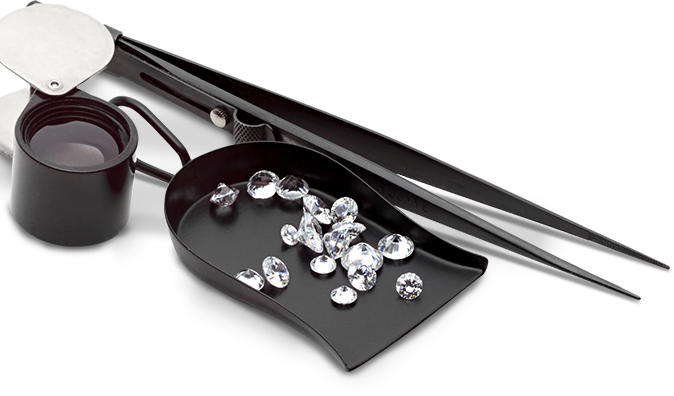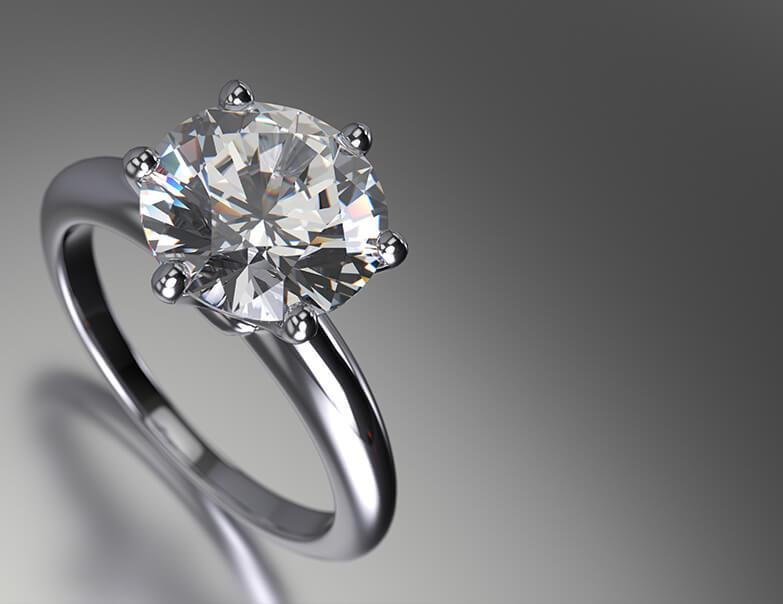Lab grown diamonds are known by many names: lab grown diamonds, cultured diamonds, sustainable diamonds, eco friendly diamonds along with many others. Regardless of what you call them, they certainly have created a revolution in the diamond industry.
So what are they? Simply put, they are diamonds grown in a lab. These labs use cutting-edge technology to replicate the natural processes that create diamonds found in the earth. The end result is a lab created diamond that is the same as a mined diamond chemically, physically and optically.
Lab Grown Diamonds are just like test tube babies grown from a single seed of Diamond under the same heat and pressure like in the crust of earth. They are ecologically friendly as they do not scar the earth with mining., most importantly, they are more uniform, yet cheaper than earth-mined diamonds.
Yes it is a real diamond, even the most sophisticated gem laboratories certify it as diamonds. The long answer is that the Federal Trade Commission (FTC) defines a diamond as pure crystallized carbon in the isometric cubic system, whether it is mined from the earth or grown in a lab. The FTC has chosen this definition of a diamond as both lab grown diamonds and mined diamonds have the same chemical, optical and physical properties. This means that regardless of the origin, crystallized carbon is a gemstone known as a diamond.
The only difference between lab and mined diamonds is the origin of these diamonds, instead of being mined from the earth they are Grown under controlled environment in a lab.
Cosmos brings you exquisite collection of designer jewellery studded with sparkling lab grown diamonds with 100% buy back!
How are lab grown diamonds made?
Diamonds pulled from the earth are thought to have been formed 1 to 3 billion years ago. However, scientists believe that they were formed from carbon dioxide being exposed to extreme temperatures (2,000+ Fahrenheit) and extreme pressure (about 727,000 pounds per square inch). These conditions are found approximately 90 miles below the Earth’s surface. Once formed, these diamonds were moved from the Earth’s core to its crust by volcanic explosions.
The process of making a diamond in a lab is much more efficient. Labs use two different methods to grow diamonds—High Pressure-High Temperature (HPHT) and Chemical Vapor Deposition (CVD).
• HPHT
When the HPHT method is used, a small diamond seed is placed into a piece of carbon. Then using either a belt press, cubic press or a split-sphere (BARS) press, the carbon is pressurized to approximately 1.5 million pounds per square inch. Additionally, the carbon is also exposed to temperatures over 2,700 Fahrenheit. This pressure and heat begin to melt the carbon, forming a diamond around the initial diamond seed. The newly formed diamond is then carefully cooled.
• CVD
Like HPHT, CVD uses a small diamond seed (often an HPHT diamond). This seed is placed inside a sealed chamber that is heated to over 1,400 Fahrenheit and filled with carbon-rich gases (typically methane and hydrogen). These gases are then ionized into plasma using a technology similar to lasers or microwaves. This technology essentially breaks down the molecular bond of the gas. Once the molecular bond is broken down, pure carbon begins to stick to the seed and a new diamond forms. Additional treatments may be used (heat or irradiation) to enhance or change the diamond’s color after it is grown.
Can you tell the difference between Lab grown and Mined Diamonds?
Lab grown diamonds are identical to mined diamonds. Even to the trained eye, it is impossible to tell the difference between a diamond grown in a lab and an earth mined diamond. Distinguishing between the two requires sophisticated equipment specifically designed for identifying lab grown diamonds. Traditional observations and diamond-detectors cannot tell the two kinds of diamonds apart from one another since they are identical both chemically and optically.
So, a lab grown diamond and a mined diamond will look the same and you won’t be able to tell the difference because they’re identical in every way.
Lab Grown Diamonds vs. Moissanites, Swarvoski, American diamonds
It is important to note the major distinction between lab diamonds and diamond simulants. Diamond simulants such as cubic zirconia which are often called as American diamonds and moissanites and even Swarovski’s which look similar to diamonds but are not really diamonds, instead are called diamond simulants.. Simulants do not have the same chemical and physical properties as diamonds and therefore sell at much lower prices than man made diamonds. Simulants can be distinguished from natural or lab grown diamonds using only the naked eye and don’t last through time giving them zero return value.
What is the Buy back / Re-sale value of Lab grown Diamonds?
We offer a 100% buy back on all its jewellery which applies for the lab grown diamonds collection also. Many retailers scare jewellery enthusiasts saying that lab diamonds have no resale value, but that is far from reality. Since they are pure carbon diamonds which will never fade, they can easily be used in another piece of jewellery giving them resale value. Apart from this there is a world market with many players dealing in grown diamonds now so the consumer can sell their lab grown diamond jewellery to anyone around the world.
What Are The Benefits of Lab Grown Diamonds?
A diamond that is created in a lab is just as real as a mined diamond. They have the same physical and chemical properties and are grown under the same temperature and pressure conditions, but without the conflict and questionable ethical practices that are common in some diamond mines. In fact, lab-grown diamonds are often of better quality due to the highly controlled environment and fully monitored process. Some of the biggest advantages of a lab-grown diamond include:
• More beautiful due to better, brighter quality and higher purity
• Fewer defects
• Environmentally friendly
• Greater affordability
• Colors that are rarely found in nature can be created, making unique and coveted pieces more obtainable
• Trackable origin sources allow you to source diamonds from reputable places that don't engage in poor treatment of workers or communities
Lab-grown diamonds are created through a sustainable process using chemical vapor deposition (CVD), making it easier to keep up with demand without sacrificing quality or engaging in harmful processes or conflicts





Leave a comment
All comments are moderated before being published.
This site is protected by hCaptcha and the hCaptcha Privacy Policy and Terms of Service apply.